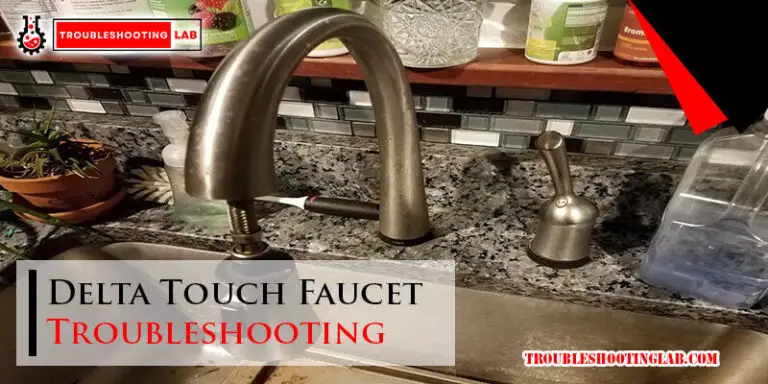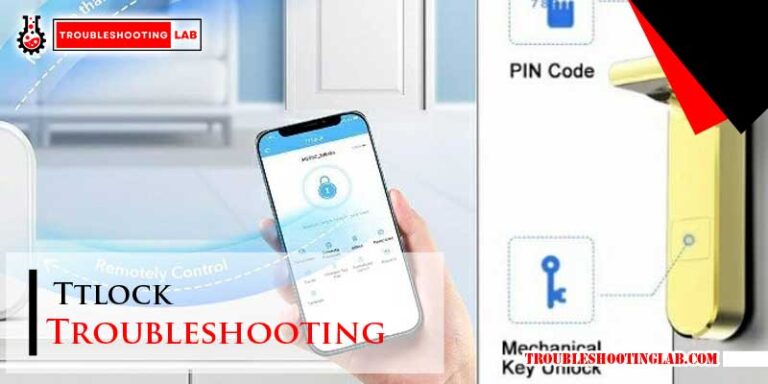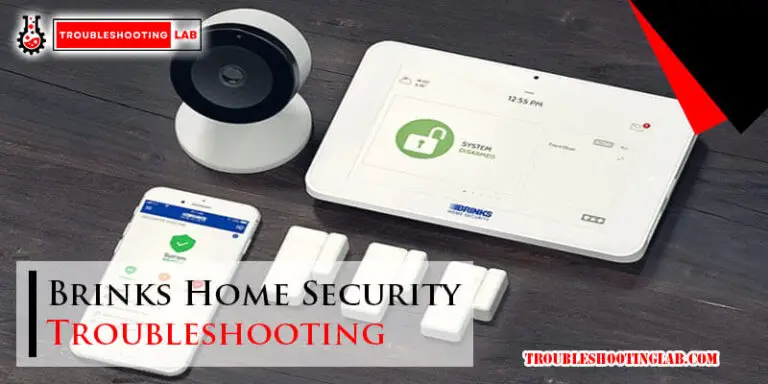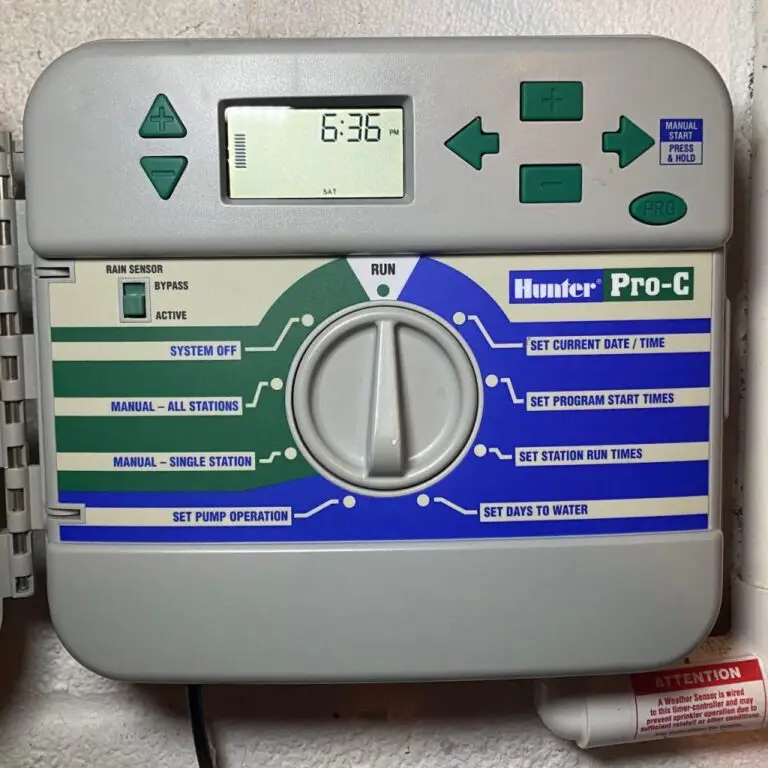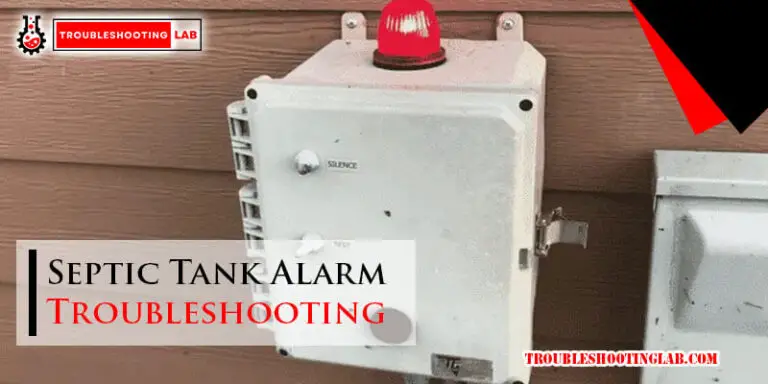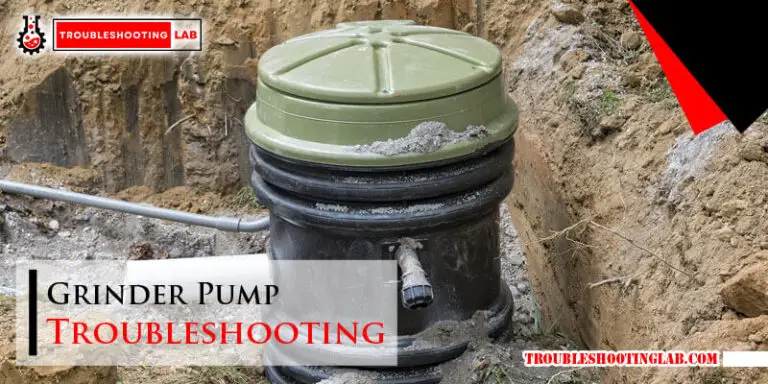Rainbird Solenoid Troubleshooting: Easy Fixes for Common Issues
Is your Rainbird sprinkler system acting up? Don’t worry—you’re not alone.
When your solenoid isn’t working as it should, it can throw your entire irrigation system off track, leaving your lawn and garden thirsty. The good news? Troubleshooting a Rainbird solenoid doesn’t have to be overwhelming. With the right guidance, you can pinpoint the problem and get your sprinklers back in action without breaking a sweat.
In this post, we’ll walk you through simple, step-by-step solutions to common solenoid issues. Stick around—you’ll save time, money, and the frustration of dealing with dead patches in your yard. Let’s get started!
Common Signs Of Solenoid Issues
When your sprinkler system isn’t working as it should, the solenoid is often the culprit. The solenoid acts as a small but powerful gatekeeper, controlling the flow of water through your system. Identifying the signs of a faulty solenoid early can save you time, money, and a lot of frustration.
1. Water Fails To Turn On Or Off
If your sprinkler zone stays dry or won’t shut off, the solenoid might be malfunctioning. A broken solenoid can disrupt the electrical signal that tells the valve to open or close. Check if the affected zone works manually—this helps confirm if the solenoid is the issue.
2. Unusual Humming Or Buzzing Noises
Have you noticed an odd humming sound coming from your valve box? This is often a sign of a struggling solenoid. The noise happens when the solenoid gets power but cannot engage properly. Ignoring this can cause wear on the solenoid and other system components.
3. Inconsistent Water Pressure
Is one zone of your lawn getting soaked while another barely gets wet? Faulty solenoids can cause uneven water distribution. This happens when the valve doesn’t open fully, restricting the flow of water to certain zones.
4. Visible Corrosion Or Physical Damage
Sometimes, the problem is right in front of you. Inspect the solenoid for rust, cracks, or other damage. Corrosion can block electrical connections, while physical damage may prevent the solenoid from functioning entirely.
5. No Response During Manual Testing
Manually activating the valve can reveal solenoid issues quickly. If the valve doesn’t respond or feels stuck, it’s likely the solenoid is broken. Always perform this test with the system powered off to avoid further complications.
Have you experienced any of these signs in your Rainbird system? Taking action sooner rather than later can prevent small issues from snowballing into larger repairs. What’s your next step to get your sprinklers back on track?
Tools You’ll Need
Having the right tools is essential when troubleshooting your Rainbird solenoid. Without them, you might find yourself stuck halfway through the process, unable to pinpoint the issue or fix it effectively. Let’s dive into the specific items you’ll need to get the job done smoothly.
Multimeter
A multimeter is your best friend for testing electrical connections. It helps you check if the solenoid is receiving power and whether it’s functioning properly. If you’ve never used one before, don’t worry—it’s simple. Set it to measure voltage, and follow the manual for your specific model.
Screwdriver Set
A screwdriver set is indispensable for opening solenoid covers or removing screws from the control box. Keep both flathead and Phillips screwdrivers handy, as Rainbird systems often use a mix of screws. A magnetic tip can save you from dropping screws in the dirt.
Needle-nose Pliers
Needle-nose pliers are ideal for gripping and maneuvering wires or small components. They come in handy when you need to disconnect or reconnect wires during troubleshooting. You’ll appreciate their precision in tight spaces where your fingers can’t reach.
Garden Gloves
If your Rainbird system is installed outdoors, gloves are a must. They’ll protect your hands from dirt, sharp edges, or debris that can accumulate around the solenoid. Choose gloves that allow flexibility so you can still handle small tools easily.
Clean Cloth Or Rag
A clean cloth helps you wipe away dirt, moisture, or grime that may interfere with your inspection. Keeping the area clean ensures you can clearly see any damage or wear on your solenoid. Plus, it minimizes the risk of dirt entering sensitive components.
Bucket Or Container
Sometimes, troubleshooting involves dealing with water. A small bucket or container can help you collect excess water around the solenoid. It’s also useful for keeping screws and other small items organized while you work.
Flashlight
A flashlight is crucial if you’re working in low light conditions or peering into small, shaded spaces. Even on a bright day, shadows can hide critical details on your solenoid. Opt for a handheld flashlight or a headlamp for hands-free convenience.
Do you already have these tools in your kit? If not, picking them up is a worthwhile investment. Each one plays a specific role in making your troubleshooting process faster and more efficient. What’s the one tool you think you’d use the most?
Checking The Power Supply
A faulty power supply is a common reason for solenoid issues. Without proper power, the solenoid cannot function correctly. Checking the power supply is a critical first step in troubleshooting your Rainbird solenoid. It ensures that the solenoid receives enough voltage to operate smoothly.
Inspecting The Power Source
Start by inspecting the irrigation controller. Confirm it’s plugged in and powered. Look for any signs of damage to the power cord or unit. A damaged controller may fail to send power to the solenoid.
Testing The Voltage
Use a multimeter to check the voltage at the solenoid’s terminals. Set the multimeter to measure AC voltage. Place the probes on the solenoid’s terminals and read the displayed voltage. Rainbird solenoids typically require 24 volts AC. If the voltage is lower, the solenoid won’t function properly.
Examining The Wiring
Inspect the wires connecting the solenoid to the controller. Look for loose, broken, or corroded wires. Replace damaged wires to restore proper power flow. Ensure all connections are secure to prevent voltage drops.
Checking For Blown Fuses
Many irrigation controllers have fuses to protect against power surges. Locate the fuse in your controller and check if it’s blown. A blown fuse can interrupt power to the solenoid. Replace it with a fuse of the same rating if needed.
Credit: www.rainbird.com
Testing The Solenoid Coil
Testing the solenoid coil is a crucial step in troubleshooting your Rainbird irrigation system. The solenoid is like the heart of your valve, controlling the water flow. If it’s not functioning, your sprinkler system might not operate as expected.
Before replacing the solenoid, testing it can save you time and money. Let’s dive into the steps you need to take to ensure the solenoid coil is in good condition.
How To Locate The Solenoid
First, find the valve box in your yard. It’s usually a small, rectangular or round box buried in the ground. Open the lid carefully—it might be hiding dirt, bugs, or debris.
The solenoid is the part with two wires sticking out of it, typically attached to the valve. Gently pull these wires out to expose the connection points for testing.
Gathering The Tools You Need
You don’t need a fancy toolbox for this. A multimeter is the main tool required. If you don’t own one, you can get an affordable one at your local hardware store.
Make sure your multimeter has a resistance (ohms) setting. You’ll also need wire strippers if the wires are damaged and a screwdriver to open the valve box, if necessary.
Using The Multimeter To Test Resistance
Set your multimeter to measure resistance (ohms). Place one probe on each of the solenoid wires. If the solenoid is working, the multimeter should display a reading between 20 and 60 ohms.
A reading outside this range could mean the solenoid is faulty. If you get no reading at all, the coil might be broken, and it’s time for a replacement.
What To Do If The Solenoid Fails The Test
If your solenoid fails the resistance test, don’t panic. Replacement solenoids are affordable and easy to install. Take your faulty solenoid to a hardware store to get an exact match.
When replacing it, ensure you reconnect the wires securely and double-check the valve’s orientation. This will help you avoid further issues down the line.
Double-check Before Replacing
Before deciding the solenoid is the culprit, ensure the problem isn’t elsewhere. Inspect the wiring for damage, and test the controller to rule out electrical issues.
A second round of testing might confirm whether you need to replace the solenoid or look deeper. This extra step could save you from unnecessary purchases.
Does your system still seem off after testing the solenoid coil? Share your experience in the comments. Let’s troubleshoot together and get your sprinklers back in action!
Inspecting For Physical Damage
Inspecting for physical damage is an essential step in troubleshooting your Rainbird solenoid. A damaged solenoid can disrupt the performance of your sprinkler system, leading to uneven watering or complete system failure. Regularly checking for visible signs of wear and tear can save you time, money, and effort in the long run.
Check For Cracks Or Breaks
Start by examining the solenoid casing closely. Look for cracks, dents, or any signs of physical stress on the body. Even small fractures can cause water to leak or the solenoid to malfunction. If you spot damage, replacing the solenoid may be your best option to restore system efficiency.
Inspect The Wiring Connections
Turn your attention to the wires connected to the solenoid. Are they frayed, exposed, or disconnected? Damaged wires can interrupt the electrical signal, preventing the solenoid from opening or closing as needed. Reconnect or replace faulty wiring to ensure a smooth operation.
Look For Corrosion
Corrosion is a common issue, especially in humid or wet environments. Examine the solenoid terminals for rust or discoloration. Even a small amount of corrosion can interfere with electrical conductivity. Use a wire brush or sandpaper to clean the terminals, or replace them if the damage is severe.
Assess The Seals And Gaskets
Seals and gaskets play a critical role in preventing leaks. Check for signs of wear, such as cracks, brittleness, or deformation. A damaged gasket can allow water to seep out, reducing pressure in your sprinkler system. Consider installing new seals to maintain proper functionality.
Evaluate Nearby Components
Don’t stop at the solenoid itself—inspect surrounding parts like the valve and housing. Debris, dirt, or damage to these components can affect the solenoid’s performance. Clear any obstructions and ensure nearby parts are in good condition to avoid unnecessary strain on the solenoid.
Have you ever overlooked a minor crack or a rusty terminal only to face bigger issues later? Take a closer look now—it might just save you from a costly repair down the line. Physical damage can be sneaky, but with careful inspection, you can catch and fix problems early.

Credit: www.youtube.com
Cleaning Dirt And Debris
Cleaning dirt and debris from your Rainbird solenoid is essential. Blockages can impact your irrigation system’s efficiency. Regular maintenance prevents issues and ensures smooth water flow. Follow these steps to keep your solenoid clean and functional.
Inspect The Solenoid For Dirt
Turn off the water supply to avoid leaks. Locate the solenoid on your irrigation valve. Carefully inspect the solenoid for visible dirt or debris. Look for clogged areas that may block water flow.
Remove The Solenoid
Gently unscrew the solenoid using your hands. Avoid using tools to prevent damage. Place the solenoid on a clean surface for further cleaning. Check the threads for any stuck debris or sediment buildup.
Rinse With Clean Water
Rinse the solenoid under clean, running water. Use moderate pressure to remove dirt. Rotate the solenoid to ensure all sides are thoroughly rinsed. Avoid using harsh chemicals that may damage the solenoid.
Use A Soft Brush For Stubborn Debris
Use a soft brush or toothbrush for tough dirt. Gently scrub the solenoid’s threads and crevices. Pay close attention to areas where dirt tends to accumulate. Ensure no debris remains before reassembling.
Inspect The Valve Housing
Check the valve housing for debris while the solenoid is removed. Use a damp cloth to wipe the housing interior. Remove any visible dirt or clogs that could affect performance. Ensure the area is clean before replacing the solenoid.
Reattach And Test
Reattach the solenoid by screwing it back into place. Tighten it securely but avoid over-tightening. Turn the water supply back on and test the system. Confirm that water flows smoothly and the solenoid works properly.
Replacing A Faulty Solenoid
Rainbird solenoids play a key role in your irrigation system. They help control the flow of water to individual sprinkler zones. A faulty solenoid can disrupt water distribution and affect your lawn’s health. Replacing it is a straightforward process that requires basic tools and attention to detail.
Step 1: Turn Off The Water Supply
Before replacing the solenoid, shut off the water supply. This prevents leaks and ensures safety during the process. Locate the main valve and turn it off completely. Double-check to ensure water flow is stopped.
Step 2: Disconnect Electrical Wiring
Rainbird solenoids are connected to low-voltage wires. Carefully disconnect the wires attached to the solenoid. Note their positions to reconnect them later. Use wire cutters or pliers if necessary.
Step 3: Remove The Faulty Solenoid
Unscrew the faulty solenoid from the valve. Twist it counterclockwise to loosen it. If it feels stuck, apply gentle pressure without forcing it. Inspect the valve for debris before installing the replacement.
Step 4: Install The New Solenoid
Take the new solenoid and align it with the valve. Screw it in clockwise until snug. Avoid over-tightening, as this may damage the threads. Ensure the solenoid sits securely on the valve.
Step 5: Reconnect Electrical Wiring
Reconnect the wires to the new solenoid. Match the wires exactly as they were connected before. Use waterproof wire connectors for added protection. Ensure the connections are tight and secure.
Step 6: Test The System
Turn the water supply back on and test the solenoid. Activate the sprinkler zone to verify proper operation. Check for leaks or unusual sounds during testing. If everything works, your replacement is complete.
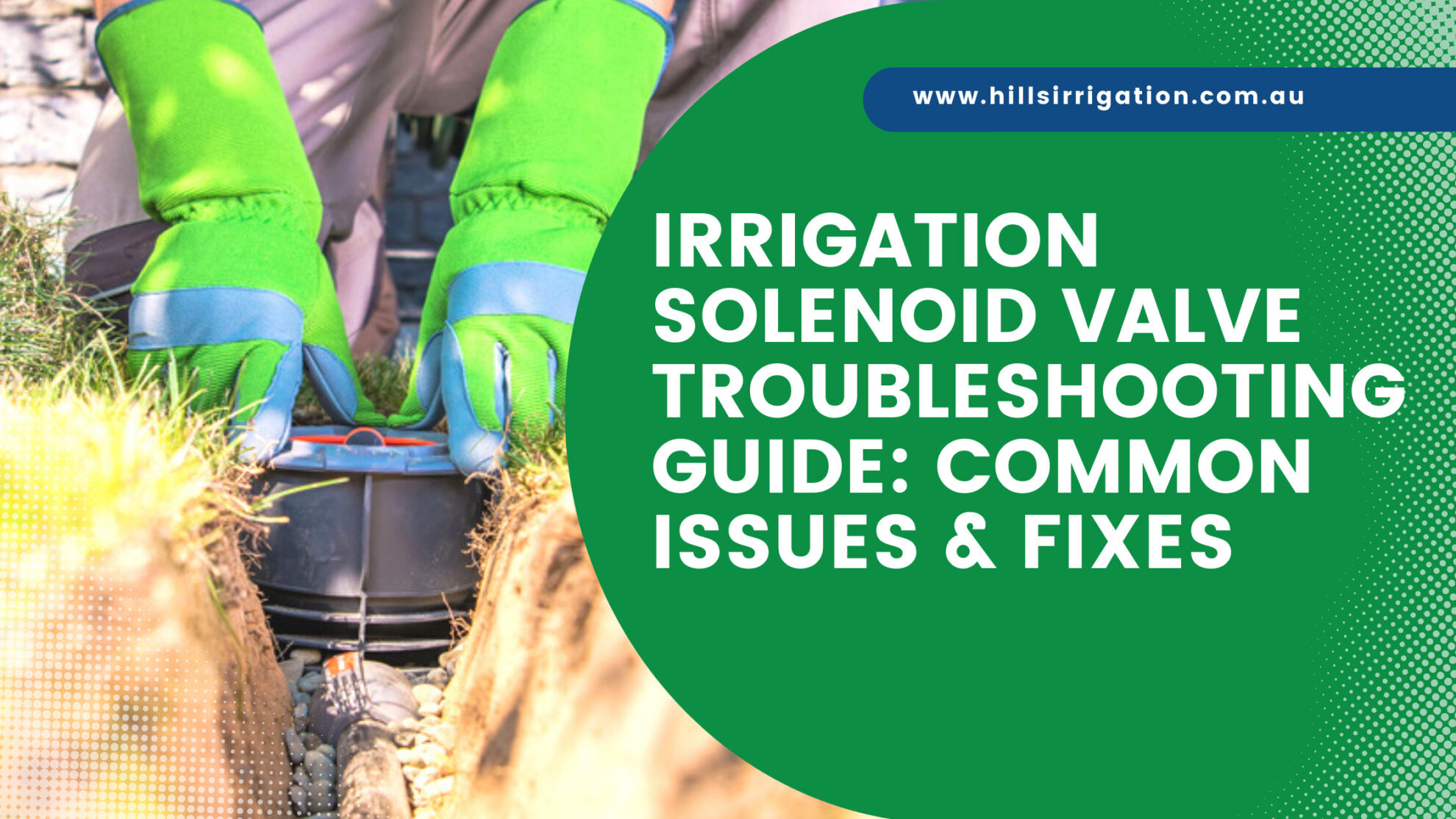
Credit: www.hillsirrigation.com.au
Preventing Future Problems
Solenoid issues with your Rainbird sprinkler system can be frustrating, but the good news is that you can prevent most future problems with a little effort and regular care. By focusing on maintenance and smart practices, you can save time and avoid costly repairs. Let’s look at how you can keep your system running smoothly for years to come.
Inspect Your System Regularly
Set aside time every few months to check your sprinkler system. Look for signs of wear and tear, like cracked wires, corrosion, or loose connections. Regular inspections help you catch small issues before they turn into bigger problems.
Don’t wait for your system to fail—take proactive measures. If you’ve recently dealt with solenoid troubles, make it a habit to check the solenoid specifically for debris buildup or damage.
Keep Solenoids Clean
Dirt and debris are common culprits behind solenoid malfunctions. Make sure to clean around the solenoids periodically, especially during peak watering seasons. A simple brush or cloth can remove most of the grime.
Consider using compressed air to clear out hard-to-reach spots. This small step can help your solenoids work efficiently and extend their lifespan.
Protect Wiring From Damage
Exposed wires are vulnerable to weather, animals, and even accidental damage during yard work. Use wire connectors or protective tubing to shield the wiring from the elements.
If you’ve ever had to replace damaged wires, you know how tedious and expensive it can be. Protecting your system upfront saves you from unnecessary hassle later.
Test Water Pressure Regularly
High or inconsistent water pressure can strain your solenoids, causing them to wear out faster. Use a pressure gauge to ensure the water pressure stays within the recommended range for your Rainbird system.
If the pressure is off, consider installing a pressure regulator to maintain a steady flow. A balanced system reduces stress on all its components.
Use Quality Replacement Parts
When replacing solenoids or other parts, opt for genuine Rainbird components. Generic parts may not fit or function as well, leading to recurring issues.
Think about the long-term. Spending a little more on high-quality parts now can save you from frequent repairs in the future.
Store Manuals And Diagrams
Keep your Rainbird system’s manual handy for troubleshooting and maintenance. If you ever need to replace or inspect a part, the diagrams can guide you step-by-step.
Have you misplaced your manual? Download a digital copy from Rainbird’s website and save it on your phone or computer for easy access.
Ask Yourself: Are You Overwatering?
Overwatering can put unnecessary strain on your system. Assess your watering schedule and adjust it based on seasonal needs and soil conditions.
Cutting back on watering not only helps your solenoids but also conserves water and lowers your utility bills. It’s a win-win situation!
By applying these practical tips, you’ll prevent many future problems and keep your Rainbird sprinkler system running like new. What steps will you take today to protect your system?
Conclusion
Fixing a Rainbird solenoid doesn’t have to be complicated. Start with basic checks like wiring and debris. Small issues often cause big problems. Regular maintenance can prevent future malfunctions. Always use proper tools and follow safety guidelines. If issues persist, consider replacing the solenoid.
A well-functioning system ensures efficient irrigation. Keep your lawn healthy and water usage optimized. Troubleshooting saves time, money, and effort. With these tips, your Rainbird system can work smoothly again.

